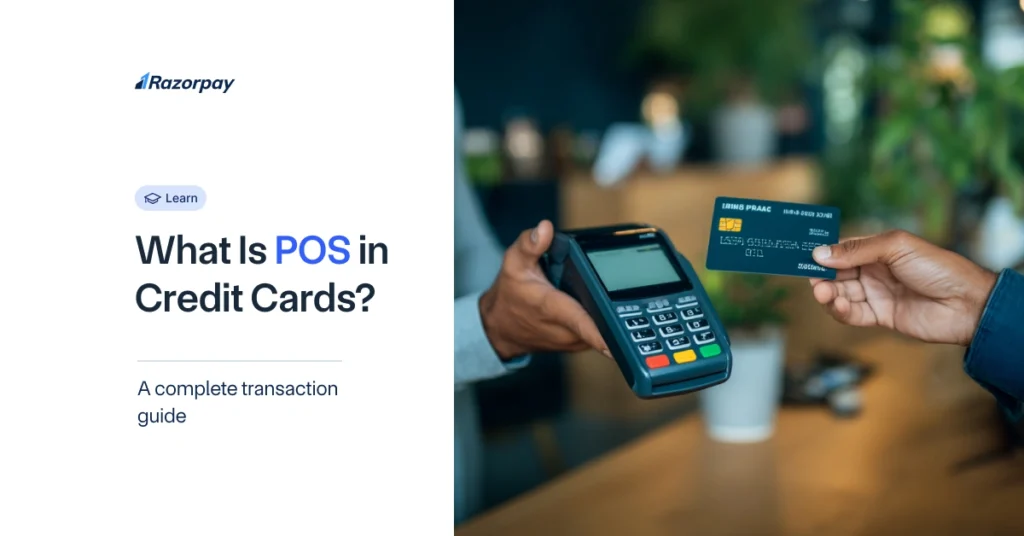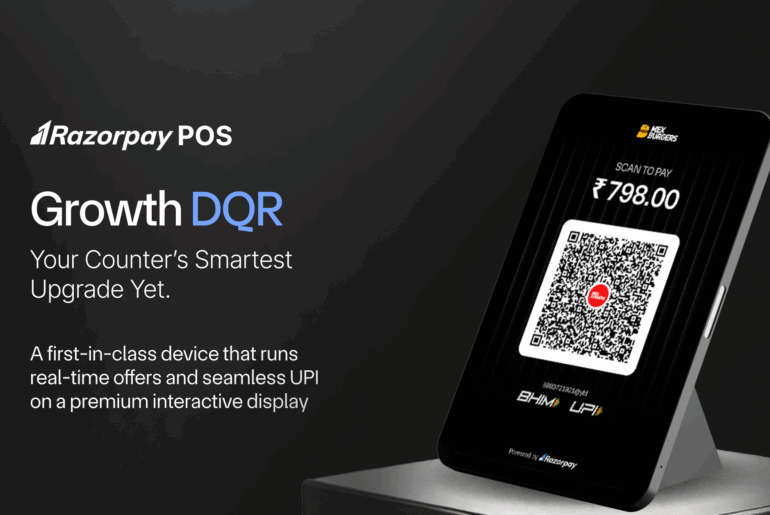A credit card POS setup enables real-time, secure processing of card payments. It works by reading your card, communicating with the issuing bank, and completing the transaction within seconds. These systems come in various forms: physical terminals at checkout counters, mobile POS devices that run on smartphones or tablets, and virtual POS platforms for online payments.
POS credit card processing plays a key role in today’s digital payments. It ensures quick, secure transactions for both customers and merchants, making it essential in modern retail and e-commerce.
Table of Contents
POS Credit Card Meaning and Operations
A POS credit card transaction simply means paying with your credit card through a Point of Sale terminal. It’s the process where your card is swiped, inserted, tapped, or keyed in to complete a purchase.
While both debit and credit cards work on POS systems, there’s a key difference. A debit card POS payment deducts money directly from your bank account. A credit card POS transaction, on the other hand, lets you borrow funds from your credit limit and pay later.
|
Did you know? Credit card transactions crossed ₹21.16 lakh crore in FY 2025, showing a 15% rise year-on-year, indicating strong consumer preference for credit over debit in spending. |
Here’s how a POS credit card transaction works:
-
Initiation – You present your credit card at checkout.
-
Verification – The POS terminal reads the card details.
-
Authorisation – It sends a request to your issuing bank to confirm available credit and approve the transaction.
-
Settlement – Once approved, the amount is debited from your credit line and credited to the merchant’s account.
To ensure secure transactions, POS systems use encryption, tokenisation, and real-time fraud detection tools. These safeguards protect your card details and reduce the risk of misuse during point-of-sale credit card processing.
Importance of POS Systems in Credit Card Transactions
POS systems are essential to smooth and secure credit card transactions. Without them, processing card payments in real time wouldn’t be Possible. They act as the bridge between customers, merchants, and banks, making every transaction quick, accurate, and reliable. For customers, these systems ensure fast checkout, accurate billing, and secure handling of your card data. For merchants, it simplifies payment acceptance while reducing manual errors.
These systems also play a key role in fraud prevention. They verify card details, require PINs or OTPs for authentication, and use encrypted networks to protect sensitive data.
Beyond payment processing, businesses benefit from POS systems by tracking daily sales, managing inventory in real time, and offering better service. For small business owners and online sellers, a reliable POS setup improves efficiency and enhances customer trust.
POS in Credit Card: Technology and Advancements
POS in credit card transactions has come a long way—from bulky swipe machines to sleek, smart systems supporting contactless and QR-based payments. Today’s credit card POS systems use technologies like Near Field Communication (NFC) for tap-and-pay, mobile POS devices that work through smartphones, and cloud-based POS solutions that sync data in real time across locations.
AI and data analytics now play a key role in POS credit card processing. They help detect fraud patterns, automate risk checks, and enhance transaction speed without compromising security.
Looking ahead, POS systems are set to adopt biometric authentication, blockchain-based ledgers, and AI-driven fraud detection tools. These innovations will further strengthen the security and efficiency of POS transactions, shaping the next phase of digital payments in India.
Conclusion
POS systems play a crucial role in credit card transactions by enabling real-time, secure payment processing. They’ve transformed how businesses accept payments, making transactions quicker, safer, and more convenient for both customers and merchants.
Over time, POS terminals have evolved from simple swipe machines to advanced systems that support contactless payments through NFC, QR codes, and mobile POS devices. These innovations have improved user experience, reduced checkout times, and strengthened fraud prevention, helping businesses stay efficient and competitive in a digital-first economy.
FAQs
Q1. Is there a charge for using a credit card at a POS terminal?
You don’t pay directly, but the merchant incurs a fee known as the Merchant Discount Rate (MDR)—a small percentage of each transaction. Occasionally, merchants may pass on a nominal surcharge to you.
Q2. Can I use my credit card for POS transactions internationally?
Yes, as long as your card issuer has enabled international transactions and the terminal accepts your card network (Visa, Mastercard, etc.). Though you must be aware of foreign-currency conversion fees and cross-border charges that your bank may apply.
Q3. Are POS credit card transactions safe?
Absolutely. Modern POS systems use EMV chip technology, end-to-end encryption, and tokenisation to protect your card data. Real-time fraud detection also alerts issuers to suspicious activity immediately.
Q4. How do POS systems ensure security in credit card transactions?
They encrypt data at the terminal, replace card information with tokens, comply with PCI-DSS standards, and employ machine-learning tools to flag anomalies. PINs, OTPs, and biometric options add extra layers of protection.
Q5. How do I choose the right POS system for my business?
Choose a POS system based on your business size, sales channels, and feature needs like inventory tracking and billing integration. Ensure it’s secure (PCI-compliant), easy to use, scalable, and offers reliable support with transparent pricing.



